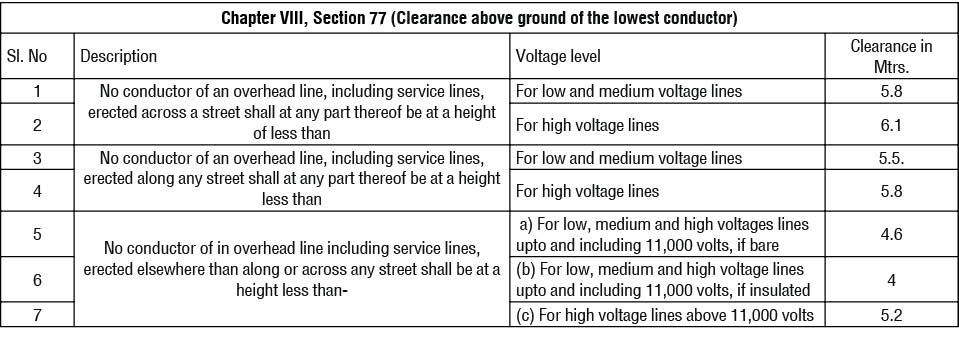
Er Y Akito Sema
Executive Engineer, Dimapur Electrical Division
1. Energy Conservation: With the global drive to reduce energy consumption and especially during this power crisis in India and Nagaland in Particular. It is a big concern for all to think of conserving power. With Nagaland having a meager generating capacity of 27 MW there is no alternative but to conserve energy. Without Electricity one cannot think of surviving or moving ahead in any aspect. In Nagaland the domestic consumption accounts for approximately 80 %. Apart from indirect energy used in production of household items, energy is directly used for cooling and heating, refrigerating, cooking, laundry, lighting and operation of household appliances/gadgets, which is innumerable. The need for domestic energy conservation at all level with country’s increasingly dependency on electricity usage is the need of the hour.
2. Revenue Improvement: With the present inefficient revenue collection and high customer debt burden in Nagaland due to illegal and rampant use of power by means of theft of energy in the form of hooking, tampering of Energy Meters and By-passing of Energy meters. There is another major factor affecting the Department of power and that is energy losses and growing customer dissatisfaction due to the erroneous meter reading or no meter reading, estimated/wrong billing and abysmal service delivery leading to heavy loss in the revenue collection. At this juncture, we have no options but adoption in the shift of metering policy to prepaid Meters.
3. Reduced Power outages: With the energy conservation, the burden on the Distribution transformers will be greatly reduced hence power outages will be reduced due to fuse getting blown off and the need for frequent maintenance of your Distribution Transformers and the Distribution network which irritates the consumers will be reduced.
4. Allows the consumers to budget: Transparent energy management services, energy savings, elimination of estimated billing, reduced home visits. Ultimately, it is expected to put the consumer in control of energy consumption. With this energy consumption under your control the life of your Electrical appliances/gadgets is expected to rise which will account for a great saving surpassing the cost of energy charges that has been paid.
5. Pay-as-you-go system: It will allow customer to buy electricity as and when is required by him. Hence the consumers need not stay in long queues to pay your Electricity bills.
6. Display of remaining credit: The prepaid meters have the provision to display the actual remaining credit, money value as well as the total kWh consumption. This will put consumers in the position to manage their energy purchase to suit their requirements. Since the meter displays credit instead of energy units it’s easy for the consumer to co-relate the tariff with his expenditure.
7. No more tension: Consumers don’t have to worry for erroneous bill due to wrong meter reading or estimated /average bills hence increasing the life span of the consumers due to tension free life.
Awareness on Electrical Hazards and Safety Measures
In this era of fast developing and dependency on usage of Electricity, demand for Power is increasing at such a pace that it is difficult to maintain the stability and consistency, the pace at which the world is progressing and developing is immeasurable. Electrical hazards and safety measure awareness must be enhanced to save lives and property.
Electricity helps to facilitate economic development and it is a well-known fact that electricity is essential to everyday life, without it life will be boring both at home and at the work place. As much as we depend on electricity so also the importance of electrical safety awareness for the electricity users must be adhered. Electrical accidents occur due to shear negligence and lack of knowledge.
The electric shock may likely occur when the body becomes part of an electric circuit leading to electric shocks under the following conditions.
i) A person may have contact with both conductors in a circuit.
ii) A person may provide a way between an ungrounded conductor and the ground.
iii) A person may provide a way between the ground and a conducting material that is in contact with an ungrounded conductor.
iv) The degree of shock an individual receive is dependent on several factors. Such as the Voltage level, the amount of current that is conducted through the body, the path of the current through the body, the duration of time a person is subjected to the current and the skin resistance. That is when the skin is wet or moist the degree of shock will be greater.
Causes of Fire and Electrical Shocks:
1. The major causes of fire in buildings are arcing or sparking due to loose electrical connections, overheating of electrical equipment & appliances, lamp holder.
2. Underrated cable size during installation: Many of the electrical consumers are in the habit of compromising with the quality of Electrical wires used at home for internal Electrification, thereby using underrated cable sizes, low and cheap quality of wires in order to reduce the cost involved
3. Overloading of socket due to lack of knowledge, where 5A sockets are connected to the appliances with more than 5 A thereby causing the sockets to be overheated leading to short circuit
4. Use of overrated fuse and MCB in which case the protective device will not respond as desired.
5. Improper earthing or no earthing at home and for Electrical appliances. Not installing lightning arrestors at home, completely exposing the safety of human lives as well as the Electrical appliances at home. Proper earthing for equipment’s and lightning arrestors preferably with copper plates should be mandatory.
6. Self styled engineering, where the Electrical Engineers and technical experts are never consulted or engaged during the laying & estimation of Electrical wiring. Rather the owner of the building or the wireman is the Electrical Engineer in this regard.
7. The level of awareness and knowledge of basic rules of electrical hazards and safety measures among electricity users are not well informed.
8. Construction of buildings very near to the Electrical networks, we come across many buildings constructed so close to the live wires and other electrical networks, this practice is very hazardous. The main objective should be focused in safety of human lives and not space. Indian Electricity Rules 1956 clearly mentions the safe distance to be maintained as charted below. Non-adherence of these guidelines has caused a lot of hardship for the Department of Power as well as cost many precious lives.

(4) For extra-high voltage lines the clearance above ground shall not be less than 5.2 metres plus 0.3 metre for every 33,000 volts or part thereof by which the voltage of the line exceeds 33,000 volts. Provided that the minimum clearance along or across any street shall not be less than 6.1 metres.

DO’S
1. Always consult your Electrical Engineer or technical Expert for design and estimation for any electrical installation or electrification.
2. Use only approved wires and cables of appropriate size according to the load requirement.
3. Use appropriate connection pins for the relevant equipment.
4. Check for cuts, joint or cracks in your cables
5. Follow electrical isolation procedures for handling any electrical equipment’s.
6. Assure yourself and make sure that there is proof of isolation before you touch or work in any circuit.
7. Repair electrical equipment’s only by authorized personnel’s.
8. Insulate all the junction joints and make sure there are no breaks
9. Wear electrically resistant gloves and equipment’s
10. Ensure proper grounding of all electrical equipment’s
11. Install Lightning arrestors in your buildings.
12. Ensure to inspect your electrical equipment’s and appliances regularly by qualified electrician.
13. Unplug your appliances from the socket when not in use.
14. Read the equipment’s manual before installation
15. Ensure that correct size of Fuse and MCB is installed.
DON’Ts
1. Don’t construct your buildings or any structure below or along an overhead line of any voltage level. If at all it has become unavoidable, stick to the distance mentioned in the Indian Electricity rules 1956. Any building or structure constructed compromising the distance is treated as illegal and compromising the safety of human lives.
2. Don’t use electrical equipment’s in wet floor or areas that are damp.
3. Don’t touch any outlet, sockets and switches with your hands in wet condition.
4. Avoid touching electric poles and conductors. They are meant to be touched and work to be carried out only by authorized persons.
5. Use of Electric poles for works such as using it as support for your telephone wires, cable networks, telecom wires etc. is unauthorized. They are adding more danger to the network since they overload the poles as well as exposure to short circuit when they come in contact with live wires.
6. Each socket is meant for single equipment, don’t overload your electrical outlets by inserting a multi pin plugs and multiple extension from a single outlet.
7. Never assume the power is disconnected unless you have verified.
8. Don’t attempt to repair your equipment’s unless you’re qualified
9. Don’t remove the ground pin in your socket.
10. Don’t use an earth connection as neutral connection.
11. Don’t use outlets or chords with exposed wiring.
12. Don’t keep your control panels and circuit breakers in closed or inaccessible locations. During emergencies they must be easily accessible to instantly cut off the circuit.
13. Don’t attempt rescue a person with bare hands if it has become entangled with energized equipment.




